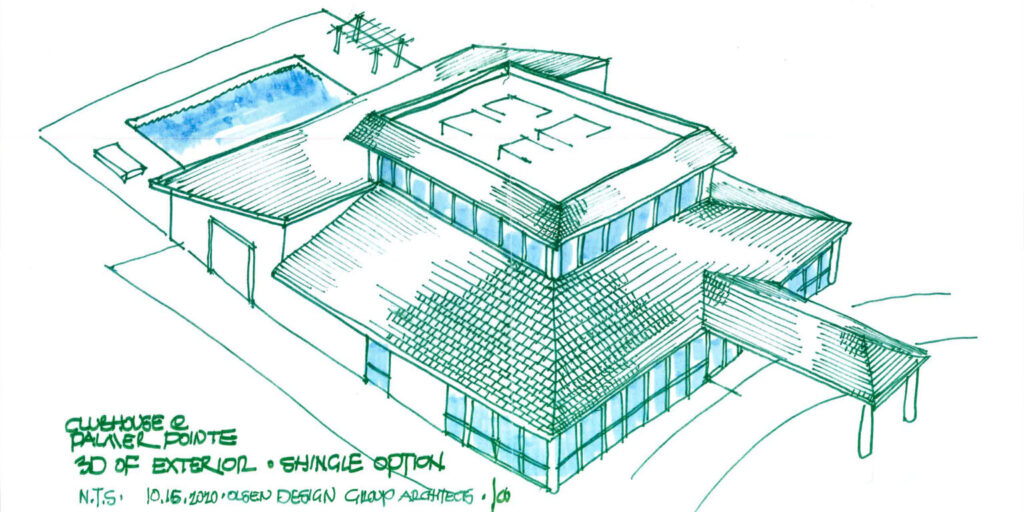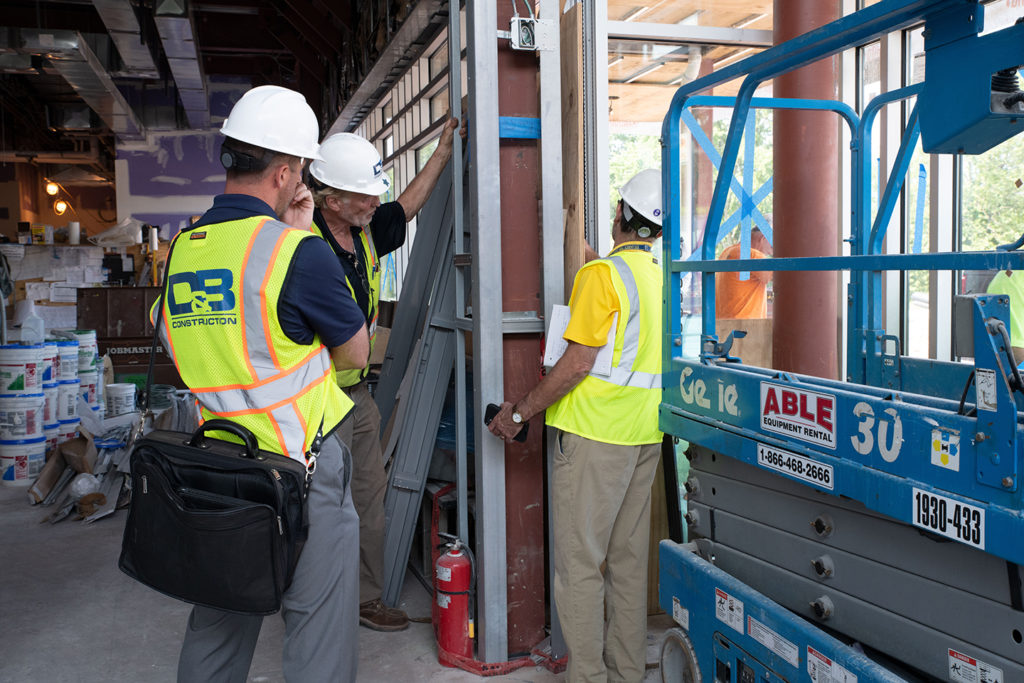As developers review new construction projects, a recurring decision must be made in the early stages of development: Should the project be design-bid-build or design-build? These are the two primary delivery methods utilized in the industry, both of which have benefits and weaknesses. We’ve taken the time to review what differentiates the two so you can understand them better.
This process is selected most commonly when pricing is the major driving force behind the decision, as the low bid usually wins. The delivery method starts by taking a project to a design team (which is comprised of consultants, architects and engineers) to create a set of documents that can be used to solicit bids from construction companies. Once design documents are completed the project is put out to bid in a process that is usually managed by the Architect or an owner representative. The objective of the bid process is to solicit the lowest price from a construction company for the specified work. Once the lowest bidder is identified, the owner will then enter into a contract to build what was designed. You can learn more about this process here on our website.
The Design-Build process utilizes one construction company to oversee all steps of the project from design to completion. This delivery method creates a turn-key solution for developers, as it can be customized to meet the needs of the developer. Developers can tailor what their Design-Builder will manager in the process from property acquisition and municipal approvals, to all design documents, submittals and construction. This framework provides a lot more freedom to developers who may be working on several projects at once. You can learn more about this process here on our website.

So which is the best delivery method?
Both Design-Build and Design-Bid come with their fair share of pros and cons. Next, we’ll review those pluses and minuses to see if there’s a clear winner.
Benefits of Design-Bid:
–Cost: Design-Bid is most often used when your project has a fixed budget. This process elicits the most competitive proposals from competent builders.
–Control: In this delivery method owners have much clearer control over pricing, design, and approvals.
–Transparent: Design-Bid captures a client’s upfront wants and needs.
If you ask D&B Construction’s Project Executive, Jim Aylmer, he’ll tell you that he prefers Design-Bid-Build for larger projects because it “creates an accurate pricing exercise as it relates to a client’s budget, it allows time for value engineering and more cost-effective budgeting, and the end product is mapped out.” Whenever he has been involved with Design-Build projects they have been for smaller-scale projects, as these designs tend to be more simplified and there is more involvement from the owner throughout the build process.
Negatives of Design-Bid:
–Disputes and Delays: When you do a competitive bid process you will only get pricing on exactly what is on your drawings. If your design team misses anything on the construction documents that were used for the bid, you will often end up with finger-pointing in the field and costly change orders.
–Time: It can take a long time to organize a design team, create documents, put the project out to bid, go through rebidding and post-bid value-engineering, identify a contractor, and enter into agreements all before you get a shovel in the ground.
–Disjointed: Due to the number of disconnected parties in a Design-Bid construction project, you may encounter communication issues as the owner, designers and builder, along with their trades, all act independently, worried about covering their own portions of the project instead of the entirety.
Drawbacks of Design-Build:
–Non-competitive: The non-competitive nature of this process doesn’t result in a lowest cost proposal from multiple bids.
–Trust: Due to the amount of control a developer is giving up to the Design-Builder, you need to have a lot of trust in the team you’ve selected.
Benefits of Design-Build:
–Efficiency: Consolidating the entire process in one entity allows the most coordination throughout the entire construction process from design to completion. The simplification of design-build allows developers to focus on multiple projects at once.
–Customization: This delivery method is great for projects that are unique in finishes and structures. Linking the construction and design teams from the beginning ensure constructability with real-time cost adjustments. This allows owners to effectively manage budgets before breaking ground.
–Flexibility: Both to the budget and final end product
–Value-Engineering: Throughout the process, developers can monitor and adjust various components of the design for substantial equivalents that can save time and money during construction.
–Enhanced Communication: Having one central decision entity (the design-builder) allows for free flow of information from the start of a project. All trades, designers, and owners are communicating through the contractor, which ensures unified messaging and vision through one cohesive team.
Tim Cox, President and CEO of Meister-Cox Architects, emphasizes how he “really likes how it is a team effort when doing design-build projects,” explaining that in these types of projects he works with D&B, the client, and at some point will bring in the subcontractors if they are going to do the design and the drawings for the mechanicals, electrical, and plumbing systems. “It’s a give and take and just part of the value-engineering process really, he explains.”
–Timing: Utilizing a design-build approach provides a project that is well scheduled and designed before the start of the construction. Having an early jump on a project’s components allows the builder to coordinate the trades further in advance. This allows the various stages of active construction to flow seamlessly.

Can We Declare An Ultimate Winner?!
In short, both construction delivery methods have their significance. As it is with any construction project, what you end up going with ultimately depends on your final usage. Timing and cost are generally the prevailing guidelines for making this decision. Ultimately, when choosing between Design-Build or Design-Bid a careful analysis of your needs and the points mentioned above should be considered in order to determine the best option for your project.
Jim, our Project Executive, typically would recommend Design-Bid projects for “any and all out of the ground projects.” The reason being? “The client and design team already have the plan in place. We as the construction team then need to execute based off of these design documents,” he explains. Kennett Pointe, Butler Square Apartments, Veterinary Emergency Group, Griswold Home Care, and Children’s Hospital of Philadelphia’s Souderton ambulatory building are recent examples of Design-Bid jobs that he has played a vital role in.
“Typically, major developers will not likely be performing a project based off of Design-Build. If I had to choose, I would 99% steer a client in the direction of Design-Bid-Build,” he concludes.

Food For Thought:
-If you had to choose one over the other, which would you lean towards and why?
-Are there any pros / cons you would add to the list for either construction method?
We’d love to hear your thoughts on the above questions! Feel free to provide your feedback in the comment section below.
If you’d like to discuss what is right for your next project, we’d be glad to talk it through with you in more detail. Reach out to us today to learn more.